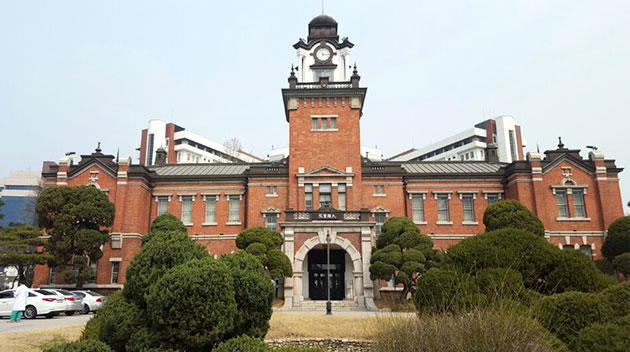
Michael Jackson’s Bibimbap
In June 1999, pop star Michael Jackson (1958~2009) visited Korea. According to reports at the time, Michael Jackson ate bibimbap several times at the hotel where he was staying. The hotel even named the bibimbap he ate “Michael Jackson’s Bibimbap” and added it to the menu. During that time, Korean airlines served bibimbap as a business class meal, but due to pricing issues, it was only available in business class. This menu was selected as the best airline meal of the year.
Bibimbap is Everyday Itself
The bibimbap Michael Jackson ate contained various mountain herbs and gobi from Ulleung Island. Bibimbap is not a special dish for Koreans; it is something commonly found around them. It’s made by mixing various vegetables and rice with soybean paste, soy sauce, or hot pepper paste at a Korean table. Adding well-cut kimchi and soybean paste soup also makes it bibimbap. Bibimbap doesn’t have a fixed recipe; rather, it’s a dish where you can freely choose and mix the ingredients to suit your taste.
You can add or omit meat in bibimbap. Beef, chicken, pork, or other types of meat are all acceptable. Fish is also the same. In old recipe book, various types of fish, including raw fish, cooked fish, fermented fish, and fish roe, are all used. The same goes for vegetables. It doesn’t matter if they are fresh, blanched, or pickled. Wild greens and mountain vegetables are all acceptable. It doesn’t matter if they are dried or fresh. Bibimbap is a dish without a fixed recipe. The moment you explain it with a set recipe, “Korean bibimbap” loses its unique charm.
For foreigners who strictly follow recipes when cooking, it’s not easy. Mixing various side dishes to your liking and eating it mixed up may feel awkward. When foreigners encounter bibimbap for the first time, they often ask about not only how to eat it but also how to make it. Explaining, “Anyone can mix rice, vegetables, and sauce to eat,” usually leaves foreigners puzzled. While we consider it a simple and comfortable food, bibimbap is a unique and characteristic food only for us.
Bibimbap and Jjapaguri Are Similar
At the 2020 Academy Awards, Bong Joon-ho’s film “Parasite” won four awards, including Best Picture and Best Director. Alongside the movie, the “Jjapaguri” featured in the film also garnered global attention. “Jjapaguri” is a combination of “Jjajangmyeon” and “Neoguri” instant noodles. Although it doesn’t resemble Jjajangmyeon in any aspect, it’s still called Jjapaguri, inheriting the legacy of “Chapaghetti.” Mixing Chinese (Jjajangmyeon) and Japanese (Neoguri udon, ramen) foods “Korean-style” to eat like bibimbap. There is no exact explanation for why it’s mixed or who started it. Several countries’ foods are mixed, and sometimes beef tenderloin is added on top.
What’s interesting is the foreign reaction. It was challenging to find a word to replace Jjapaguri in translation. It’s because it’s a food not commonly seen abroad. It was initially translated as “Lam Dong = ramen + udon” but reverted to “Jjapaguri” as the movie gained fame. Korean cuisine’s “mixture” and “bibimbap” are represented here. It’s freedom. There’s no fixed format or shape. Bibimbap, fusion, and mixed food. Nam June Paik, a world-renowned Korean artist, mentioned “Bibimbap Art.” It mixes Eastern and Western, past and present, sound and form, historical facts and everyday events on one screen. There’s no right answer to how much of each should be mixed. Various foreign elements collide and harmonize within one bowl.
Collision and Harmony Bring Chemical Reactions Between “This and That”
Various elements intertwine within one bowl, collide, and harmonize. A new, third element is born. Various ingredients collide and harmonize within one bowl. It’s tangled and collides inside one dish. The taste of the sauce blends into the vegetables, and the juice of the vegetables and the taste of the sauce mix and fuse. Bibimbap is not simply a “vegetarian, healthy food.” Bibimbap has a much broader and deeper meaning. Bibimbap is a dish that reflects Korea’s unique characteristics well.

Here is a simple bibimbap recipe tailored for vegetarians:
Ingredients:
- 1 bowl of rice
- 1/2 block of tofu
- 1/3 onion
- 1/3 squash
- 1/5 carrot
- 1/4 cucumber
- 2 mushrooms
- 1 spoon of salt
- 1 egg
- 1 spoon of sesame oil
- 3 spoons of soy sauce
- 1 spoon of Gochujang (hot pepper paste)
Cooking Steps:
- Prepare the ingredients by thinly slicing the onion, squash, cucumber, carrot, soaked shiitake mushrooms, and any other vegetables you have at home.
- Grease a pan and stir-fry each ingredient separately. Season with salt.
- Once all the ingredients for vegetarian bibimbap are ready, stir-fry the carrot, onion, squash, cucumber, and mushrooms with some salt. Cook the tofu in oil as well. If you have other vegetables like uncooked lettuce, prepare them too.
- Serve the rice in a bowl.
- Neatly arrange the various stir-fried ingredients on top of the rice. Place the seasoned fried tofu in the center.
- Finally, place the fried egg in the center. For vegetarians who don’t consume eggs, you can place the fried Tofu on it.
- Drizzle sesame oil around the bibimbap. For those who enjoy a savory taste, add a spoon of soy sauce and mix, or for those who prefer a spicy flavor, add Gochujang(hot pepper paste) and mix to enjoy a delicious vegetarian bibimbap.
Presented by Milestone™ Korea


![[Milestone] Korean Beauty & Cosmetic wholesalers](https://milestonekorea.files.wordpress.com/2024/04/ec8aa4ed81aceba6b0ec83b7-2024-04-24-ec98a4eca084-10.24.00-1.png?w=1024)
![[Milestone] Korean Accessories Wholesalers](https://milestonekorea.files.wordpress.com/2024/04/ec8aa4ed81aceba6b0ec83b7-2024-04-23-ec98a4ed9b84-3.11.02-1.png?w=1024)

